
Osteochondrosis today is rightly considered a "disease of the century" because it most often affects people whose work does not require increased physical activity.
In most cases, changes in cartilage and bone tissue are seen in people of working age - up to 40 years old.
The disease can affect different parts of the spine and the second most common is osteochondrosis of the cervical spine.
What is it?
Osteochondrosis is a degenerative disorder of the articular cartilage and adjacent bone tissue.
Previously, the term was used for a large group of osteoarticular diseases, but now it is only used for degenerative back diseases.
Compared to other parts of the spine, the cervical region is the most mobile and has many nerve and vascular formations. The structure of the vertebrae is small in size as well as in the fact that they are surrounded by a rather weak muscular corset.
This anatomical structure predisposes to the development of osteochondrosis, the severity of clinical manifestations of which depends on the nature of the changes in the intervertebral discs and the degree of their destruction.
Reasons for the development of the disease
The leading and most common cause of cervical osteochondrosis is a sedentary lifestyle.
Due to lack of physical activity with a sedentary and sedentary lifestyle:
- metabolic processes are disturbed;
- increases the level of salts in the bloodstream and lymphatic fluid;
- salts are deposited in the cervical spine, kidneys and liver.
Damage to the cervical vertebrae is mainly caused by a lack of nutrients in the intervertebral discs. Therefore, the main reasons for the occurrence of cervical osteochondrosis include improper and unbalanced diet.

Risk Factors
There are many risk factors for cervical osteochondrosis.
The most common factors are:
- heritage
- ;
- age-related changes;
- injuries of the cervical spine;
- hypothermia;
- hormonal disorders leading to metabolic disorders;
- some autoimmune diseases that damage cartilage tissue (systemic lupus erythematosus, rheumatism).
Why is it dangerous?
Not only do the spinal cord and nerve roots pass through the cervical spine, but also the vertebral artery, which is responsible for the blood supply to the back of the brain, the medulla oblongata, and the cerebellum.
Therefore, with cervical osteochondrosis, this artery is constricted, and as a result, cerebral circulation is damaged.
In extremely advanced cases, compression of an adjacent artery and blood vessels and nerve plexuses can lead to consequences such as:
- lack of coordination;
- hearing and vision loss;
- blow.
If the disease does not heal in the initial stage, it can lead to complications such as: intervertebral disc lengthening or herniated disc.
Progression of the disease
Osteochondrosis of the cervix, like osteochondrosis of other parts of the spine, develops in stages. There are 3 stages of disease development.
1 degree
Characterized by the onset of intervertebral disc destruction.
Cracks form in the annulus fibrosus, the strength and elasticity of the disc is disturbed, its height decreases, due to which the nerve roots are compressed.
The characteristic pain of pain appears. Sometimes in stage 1 (preclinical), such pain may be absent, and osteochondrosis occurs with moderate discomfort in the neck.
2nd degree
If grade 1 osteochondrosis is not treated or the treatment has not been effective, then a chronic condition arises, which is grade 2 osteochondrosis.
The pain becomes constant, the destruction and compression of the intervertebral disc continues and leads to small displacements of the cervical vertebrae.
With osteochondrosis of the cervix at this stage, descending head syndrome may develop. This syndrome is characterized by severe pain and the person should keep the head in a fixed position to reduce the pain.
third degree
Grade 3 cervical osteochondrosis is accompanied by the following symptoms:- headache;
- mixed;
- dizziness;
- neck "lumbago";
- impaired sensitivity of the upper limbs.
In stage 3 osteochondrosis, the intensity of the pain may decrease, as the affected cartilage tissue in the intervertebral disc simply does not exist, meaning that there is no source of pain, but the nerve root clot remains, sothe pain does not completely disappear.
Signs and Symptoms
There are many signs of this disease. And they depend on the vertebrae that are damaged by this disease.
Typical syndromes in cervical osteochondrosis are:
- radicular syndrome;
- vertebral artery syndrome;
- cervical migraine syndrome;
- hypertensive syndrome.
All of these syndromes are associated, first and foremost, with different types of pain.
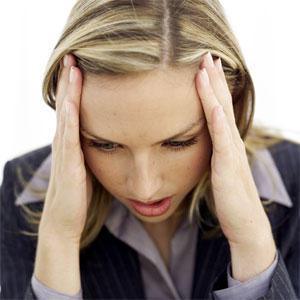
If we consider vertebral artery syndrome, then the headache manifests itself here already at an early stage of disease development.
In this case, pain attacks may be accompanied by:
- dizziness;
- unstable gait;
- visual symptoms (foggy appearance, decreased visual acuity, etc. ). fainting (with sudden movements of the head).
In hypertensive syndrome, increased intracranial pressure is defined.
Headache has more of an outbreak character, may be accompanied by nausea and vomiting. With a worsening of cervical osteochondrosis, an increase in temperature and an increase in ESR may be observed.
When the spinal roots are compressed ("radicular syndrome"), the following neurological symptoms may occur:
- severe neck pain (cervical pain);
- neck pain that spreads to the forearm and humerus (cervicobrachialgia);
- arm pain;
- sensation of cracking or cracking in the neck when turning the head;
- "radiant" pain in the ear, which occurs most often after a long stay in an uncomfortable position or a sudden movement;
- pain or feeling of a lump in the throat, breathing problems;
- numbness of the hands and tongue;
- feeling of swelling of the tongue;
- severe weakness;
- hearing and visual impairment;
- tinnitus;
- general deterioration of health.
In "cervical migraine" syndrome, irritation of the sympathetic joints is observed, which leads to disruption of cerebral vascular reactivity and impaired blood circulation.
As a result, hypertension can develop, often accompanied by:
- busy ears;
- takikardi;
- noise in the head;
- tinnitus.
When the arteries supplying the spinal cord are compressed, a spinal stroke can occur.
Violation of blood flow to the brain with osteochondrosis can lead to: A very common sign of cervical osteochondrosis is changes and disturbances in heart rhythm, for example, extrasystoles or arrhythmia. These symptoms are very common among drivers and office workers. Due to a sedentary lifestyle, changes occur in the intervertebral discs of the cervical spine and chest, which lead to disturbances in heart function. In most cases, until osteochondrosis is cured, it is virtually impossible to get rid of heart rhythm concerns. swelling under the eyes may also indicate osteochondrosis of the cervical spine. Most often they depend on the position of the head during a night's sleep, disappear during the day and are combined with headaches, dizziness, heaviness in the head, etc. Vegetative vascular dystonia is another of the common diseases that occur with this disease. is a consequence of constricted vascular arteries that run along the ribs of the spine. Preliminary diagnosis is made by a neurologist during the initial examination of the patient. Recently, the doctor had to make a diagnosis by performing only one external examination of the patient and sending him for an X-ray. But, unfortunately, it is impossible to see the full picture of the development of the disease in an X-ray. Currently available examinations such as computed tomography and magnetic resonance imaging, with which you can fully assess the stage of disease development. After making the diagnosis, the patient is referred to a physician specializing in this field. Treatment is performed by a specialist with a narrow focus - a vertebrologist or a vertebroneurologist. The severity of the main clinical symptoms is taken as the basis for the treatment of cervical osteochondrosis. In the cervical spine, the symptoms are mainly associated with constriction of blood vessels and nerve endings, therefore, during treatment, first of all, they remove the edema and restore blood circulation. There are many treatment methods used in the treatment of osteochondrosis of the cervical spine. The most effective treatment is complex, which is a combination of several methods of conservative treatment. Complex treatment of cervical osteochondrosis may include the following traditional and non-traditional methods: drug treatment, massage, acupressure, manual therapy, physiotherapy, acupuncture, homeopathy, folk remedies, etc. The main stages of treatment of osteochondrosis are the same for all localizations of this disease: Only a team of good specialists can choose the most appropriate therapy, which includes a neurologist, physiotherapist, massage therapist, surgeon and vertebral neurologist. Like any disease, cervical osteochondrosis should be treated at the earliest stage of its onset. If you do not start the process, then at this stage you can achieve a complete cure of osteochondrosis. Unfortunately, stages 2 and 3 of cervical osteochondrosis are associated with complete or partial destruction of the intervertebral discs, therefore, these stages are characterized by a very long healing process. In case of severe pain, you should get a pain reliever from your home medicine cabinet: these may be analgesic. You can also apply speci plaster for pain. Diuretics can be taken if swelling occurs. Rubbing the neck with pain relieving oils can help. You can also use aneedle applicatorfor pain, which: Physiotherapy in exacerbations is contraindicated, as well as heat, as these effects can cause serious complications. After the relief of acute pain, it is necessary to urgently consult your doctor for advice. Medication treatment most often starts with injections (in case of deterioration), then switch to tablets and suppositories in combination with topical application of oils and gels. Anesthesia during drug treatment is performed with steroid anti-inflammatory drugs. essential weight to prescribe drugs that restore cerebral circulation. Muscle relaxants can be prescribed for abnormal muscle tension. For a more effective treatment, vitamins are taken in a therapeutic dose and trace elements. In cases of intervertebral hernia, surgical intervention is often recommended and the attending physician may suggest surgery. This method works well with physical therapy and physiotherapy. You can get a massage course at any medical institution as well as by contacting private practices. Massage is necessary for cervical osteochondrosis to strengthen muscles and relieve tension in the neck. The task of the masseur is to remove harmful metabolic products by increasing blood flow and entry into the diseased area, as well as removing the spasm from the pathological area. The main techniques used by neck massage specialists are: The self-massage technique can be performed using the following techniques: Self-massage should always end with caressing. During vibrations, you can use a massager. Acupressure massage well relieves headache during the exacerbation of cervical osteochondrosis, helps with hypertension, normalizing it. Acupressure scheme: After acupressure, you should lie down for a few minutes, as you may experience slight dizziness. Manual therapy helps to cope with acute and chronic pain, also increases range of motion and improves behavior well. Main methods of manual therapy for cervical spine osteochondrosis: A specialist practicing manual therapy should be fluent in these techniques. Otherwise, any mistake can lead to injury. Acupuncture promotes the release of cortisol into the bloodstream. This hormone has a pronounced anti-inflammatory effect. Acupuncture is performed by acting on the points near the inner edge of the shoulder. The needles are inserted to a depth of 1 to 2 cm and left to act for 10 to 30 minutes. Medication treatment carries with it many unfavorable side effects, so homeopathy can be a worthy replacement for treatment without the unwanted consequences. Food should be rich in calcium and magnesium. These trace minerals are found in fish and seafood, nuts, legumes and dairy products. Often, neck osteochondrosis can be associated with atherosclerosis. In this case, a strict diet is recommended. The diet is prescribed for 3-4 months. It is necessary to limit the consumption of all foods that contain cholesterol. These include animal fats, fatty meats, fatty dairy products, etc. You should also limit or exclude the consumption of salt, sugar, flour products. It is recommended to give up bad habits (smoking, alcohol, etc. ). Cervical osteochondrosis and alcohol are interrelated. The fact is that the introduction into the bloodstream, alcohol destroys cells, thus worsening blood circulation already damaged in osteochondrosis. Therefore, you should limit it to a minimum, and during a deterioration, completely stop drinking alcohol. To prevent cervical osteochondrosis, it is recommended that you follow these rules: Often, the first symptoms of cervical osteochondrosis occur during pregnancy. This is due to a change in hormonal levels and softening of the vertebrae, as well as due to a shift in the center of gravity and excessive stress on the spine. Treatment of osteochondrosis in pregnant women is quite complicated, as it is mainly limited by the method of medication aimed at relieving pain. You can apply natural oils or turn to traditional medicine. Any influence on the neck area (heating, exercise, etc. ) during pregnancy is strictly forbidden. In children and adolescents, cervical osteochondrosis develops due to congenital or acquired functional insufficiency of cartilage tissue. She complains of headaches, fatigue, dizziness and fainting.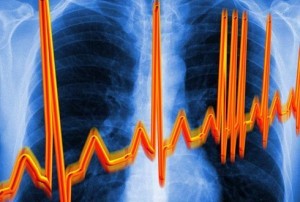
Diagnostic methods
Which doctor treats you?
Treatment of cervical osteochondrosis
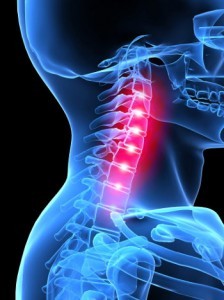
First Aid
How to relieve pain during exacerbation?
Medication treatment
Massage and self-massage
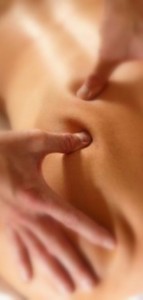
Acupressure massage
Manual therapy

Acupuncture
Homeopathy
Nutritional characteristics
Disease Prevention
Frequently Asked Questions
What to do during pregnancy and how to treat it?
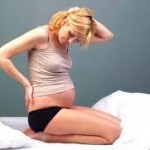
Does it happen in children and adolescents?
Is it possible to heat the neck area?
Cervical heating with cervical osteochondrosis is strictly prohibited, especially in the exacerbation phase of the disease, as heating can lead to an increase in edema and vasodilation of the brain.

How to sleep properly?
Sleep on a flat, firm bed with an orthopedic mattress.
The recommended and most comfortable position is lying on your side, with your shoulder resting on the mattress and your head resting on a small pillow.
Using an orthopedic pillow helps to relax the muscles in the cervical spine, reduces irritation of nerve endings, which prevents headaches and insomnia.
Are physical activities and saunas allowed?
In preventive measures and in the first stage of cervical osteochondrosis, it is recommended to engage in physiotherapy exercises, swimming.
Weight lifting, hard work, gym training are strictly forbidden.
A visit to the spa and sauna is also recommended only for the prevention of cervical osteochondrosis and in the initial stage of the disease.
Reviews
"I would like to share with my unfortunate brothers how to deal with cervical osteochondrosis. A few years ago I had a back pain. A visit to a doctor, the diagnosis was osteochondrosis of the cervixMany things have been proven by the treatment: physiotherapy, manual therapy and massage. But there was always only temporary relief, besides, these are all very expensive procedures. I had to start studying the problem thoroughly. And so I decided to try"It turns out that swimming is widely used to prevent and treat cervical osteochondrosis, as it relieves the tension of the cervical muscles. once a week in the pool and grief do not know. "
"Due to my overwork, I could not find time to visit a doctor. And my relatives advised me to treat neck pain with heat, herbal compresses, oils in various ways and other means forhealing at home. that the neck has stopped moving at all! I lay at home for more than two weeks, and even then I recovered for a long time. Therefore, my advice to everyone is to visit a doctor as much as possible. as soon as your neck is crushed and hurts! So you will save time and not lose health ".

























